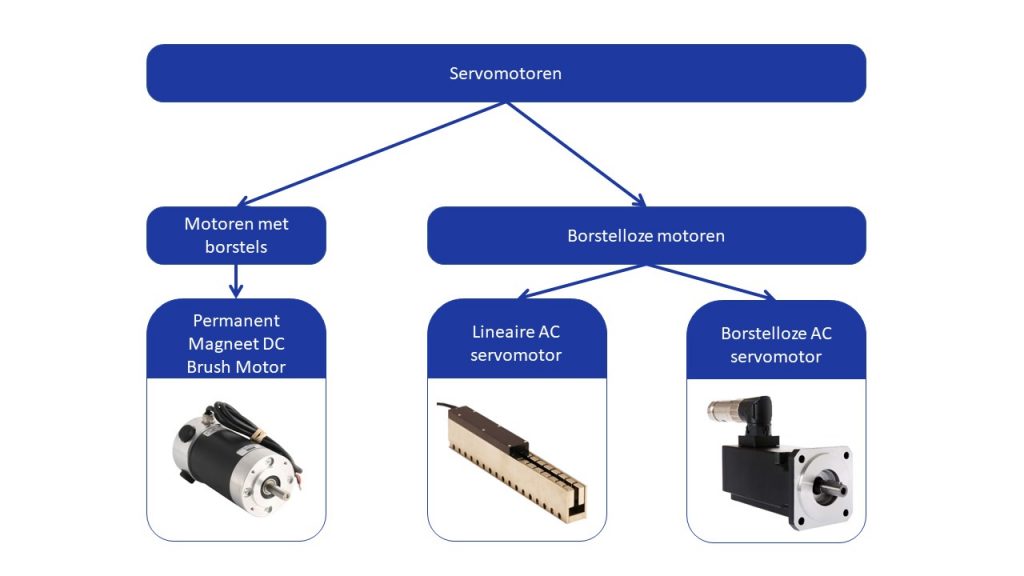What is a servo motor? The main characteristics and types
What is the best servo motor for my application? This is a common question, but one that’s difficult to answer without considering the entire servo system. This article explains why that’s the case. We discuss what a servo motor is, its key characteristics, the types available, and the role the servo motor plays in the servo system. After reading this article, you’ll have a comprehensive understanding of servo motors and what factors influence your choice.
Servo Motor Usage
A servo motor is an electric motor that converts electrical power into mechanical power. It’s commonly used in dynamic systems where fast movements are required. To achieve this, the servo motor needs to have low inertia or mass and possess high force or torque for acceleration. These requirements impact the design and construction of the servo motor. Low inertia is achieved in a rotating servo motor by employing a slender rotor or a flat “pancake” rotor design. High torque can be attained by using powerful permanent magnets.
An electric motor is typically associated with rotational motion. Through a mechanical transmission, such as a belt or spindle unit, the rotary motion can be converted into linear motion. This is often the case with a servo motor as well.
Key Characteristics of a Servo Motor
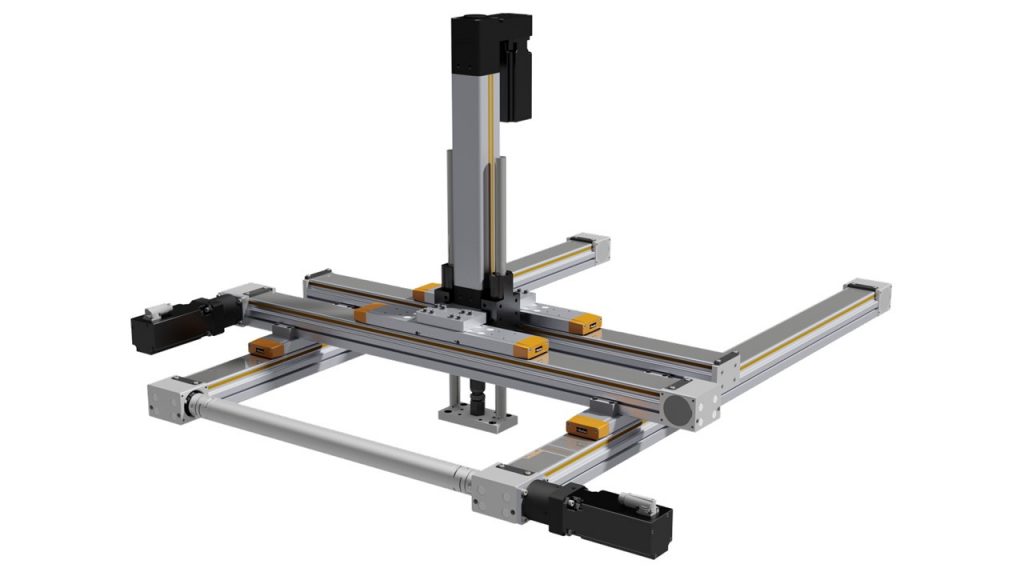
The key characteristics of a servo motor are:
- High dynamics
- High overload capacity
- Great positioning accuracy
- High speed accuracy
- Compact construction
- Low weight
- Low inertia
- High efficiency
- Part of an electromechanical servo system
A servo motor is a component of an electromechanical servo system.
Since a servo system involves position and speed control, a feedback system is necessary to measure the actual position. This feedback system is typically an encoder or a resolver and is often located within the servo motor. There are also linear servo motors or actuators that directly convert electrical power into linear motion without the need for a mechanical transmission.
History and Development of the Servo Motor
Throughout history, many inventors are recognized for their contributions to the development of the electric motor. The early days of servo motors began with Alessandro Volta and the battery, Hans Oersted’s discovery of generating magnetic fields, and Michael Faraday’s work on electromagnetism. These developments converged with Moritz Hermann Jacobi, who created the first functional rotating electric motor in 1834. His motor could lift around 5 kg at a speed of approximately 0.3 meters per second (15 watts).
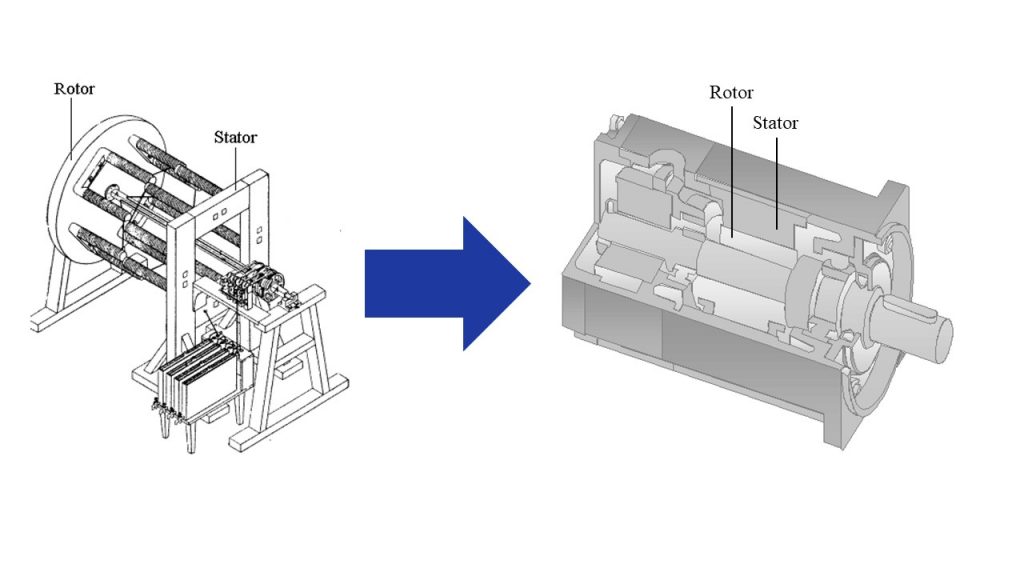
Around the 1950s, the only servomotors available were direct current (DC) motors with permanent magnets. In these versions of motors, there were “brushes” used to transfer electricity from the stator to the rotor. This caused wear on the motor, ultimately negatively impacting its lifespan. To counter this, a type of motor known as brushless DC servomotors (PMDC brushless servomotor) was developed. With this new technology, the servomotors had a longer lifespan compared to earlier models.
However, progress didn’t stop there, as this system still had its limitations. The motor was still only suitable for low-power applications, and its efficiency could be improved further. This challenge led to the development of the brushless AC servomotor. Nowadays, brushless AC servomotors find wide application in various industrial systems.
A brushless AC servomotor with rare-earth magnets has superior acceleration properties compared to all other types of motors. In the 1970s, the efficiency of brushless PM motors reached 80%, which was much higher than any other motor technology (less than 1 kW) of that time. As of now, brushless AC servomotors with rare-earth magnets can achieve efficiency levels of up to 98% and peak torque of 3-5 times the nominal torque!
Servo Motor Components
In essence, a brushless AC servomotor consists of the following basic components:
1. Stator with windings
2. Rotor with permanent magnets
3. Feedback system
4. Housing
5. Optionally, a holding brake
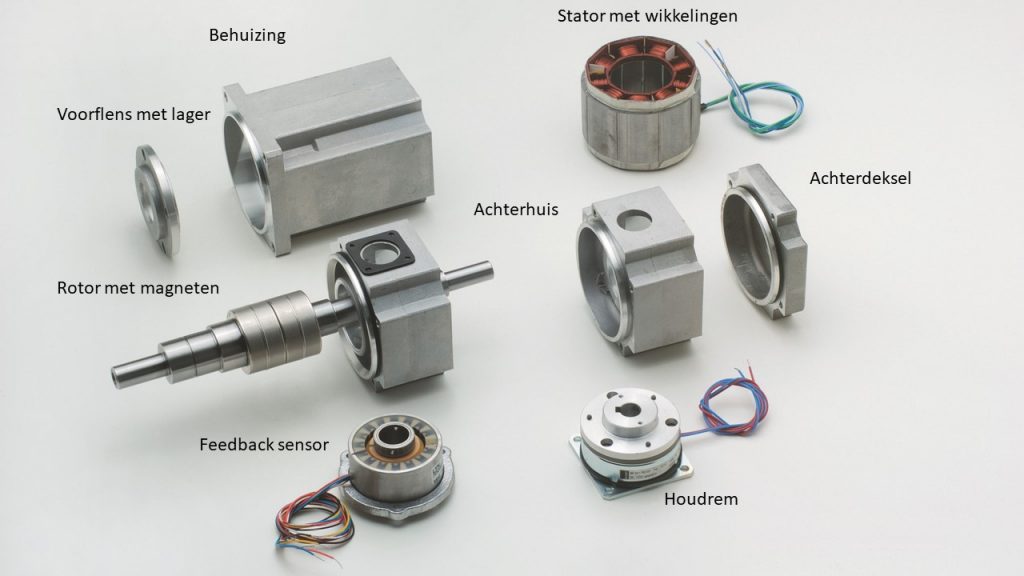
The product category of servo motors can be divided into the following groups and subgroups:
How does a servo motor work?
The principle of every servo motor is based on electromagnetism, depending on the type of servo motor, either the stator or the rotor contains permanent magnets. By supplying the windings, which are positioned within a magnetic field, with the correct current, a Lorentz force is generated that causes the rotor of the servo motor to rotate. In a PMDC (Permanent Magnet Direct Current) servo motor, these windings are located in the rotor, while in a brushless AC (Alternating Current) servo motor, they are situated in the stator.
When the rotor of the servo motor starts rotating, the current through the windings needs to be adjusted to maintain the Lorentz force in the right direction. In PMDC servo motors with brushes, this is achieved through the commutator and brushes, while in brushless AC servo motors, the current for each motor winding must be adjusted by the servo controller. By measuring the rotor position using a feedback system, the appropriate current is sent through the motor windings. A servo motor always requires a servo controller for proper operation within a servo system.
The combination of the servo motor, servo controller, feedback system, and control system forms a servo system. The servo motor is therefore intricately linked to the servo system, and the choice of a servo motor is never separate from the system it needs to function within.
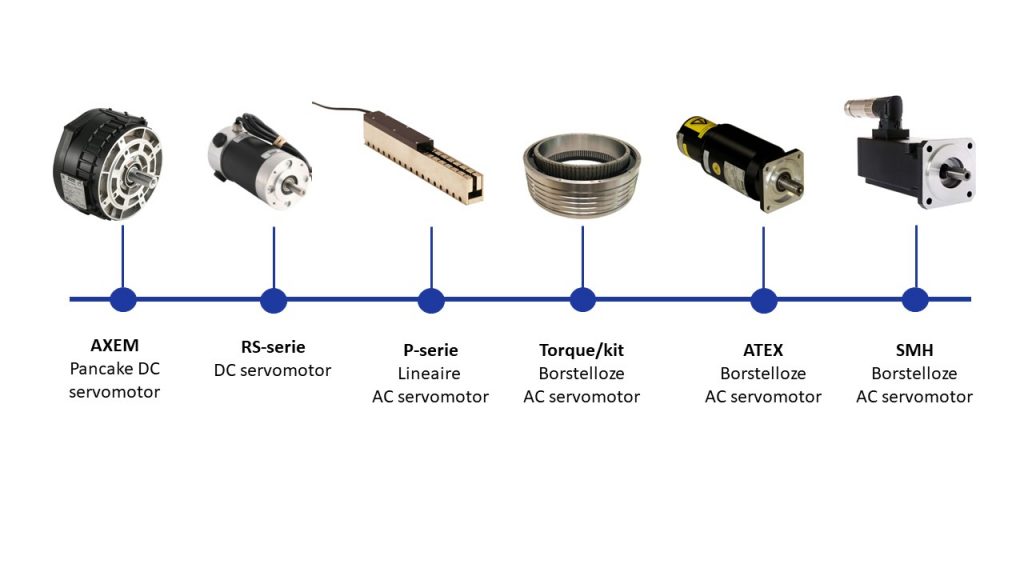
Choosing a Servo Motor: Driving Force in a Servo System
The system requirements that influence the choice of a servo motor type include:
- Drive dynamics (acceleration, speed, and displacement)
- Mass or inertia to be moved
- Desired accuracy
- Environmental conditions
- Installation possibilities
- Potential disturbances
VARIODRIVE assists machine builders in establishing a system architecture and, in collaboration with the client, determines the most technically and commercially optimal configuration. The selection of a servo motor is naturally crucial in this process. Calculating, simulating, and programming servo systems are then the specialties of VARIODRIVE, allowing us to truly support machine builders in this area.
Would you like to learn more about the possibilities? We are happy to share, through compelling case studies, how we would approach this.
Contact us at sales@variodrive.nl or call +31 186636280 to schedule an appointment.
